In May we released Imperium: Classics and Imperium: Legends, two standalone deck-building civilisation games designed by Nigel Buckle and Dávid Turczi.
Today on the blog, we are giving an in-depth look at the main mechanisms in Imperium.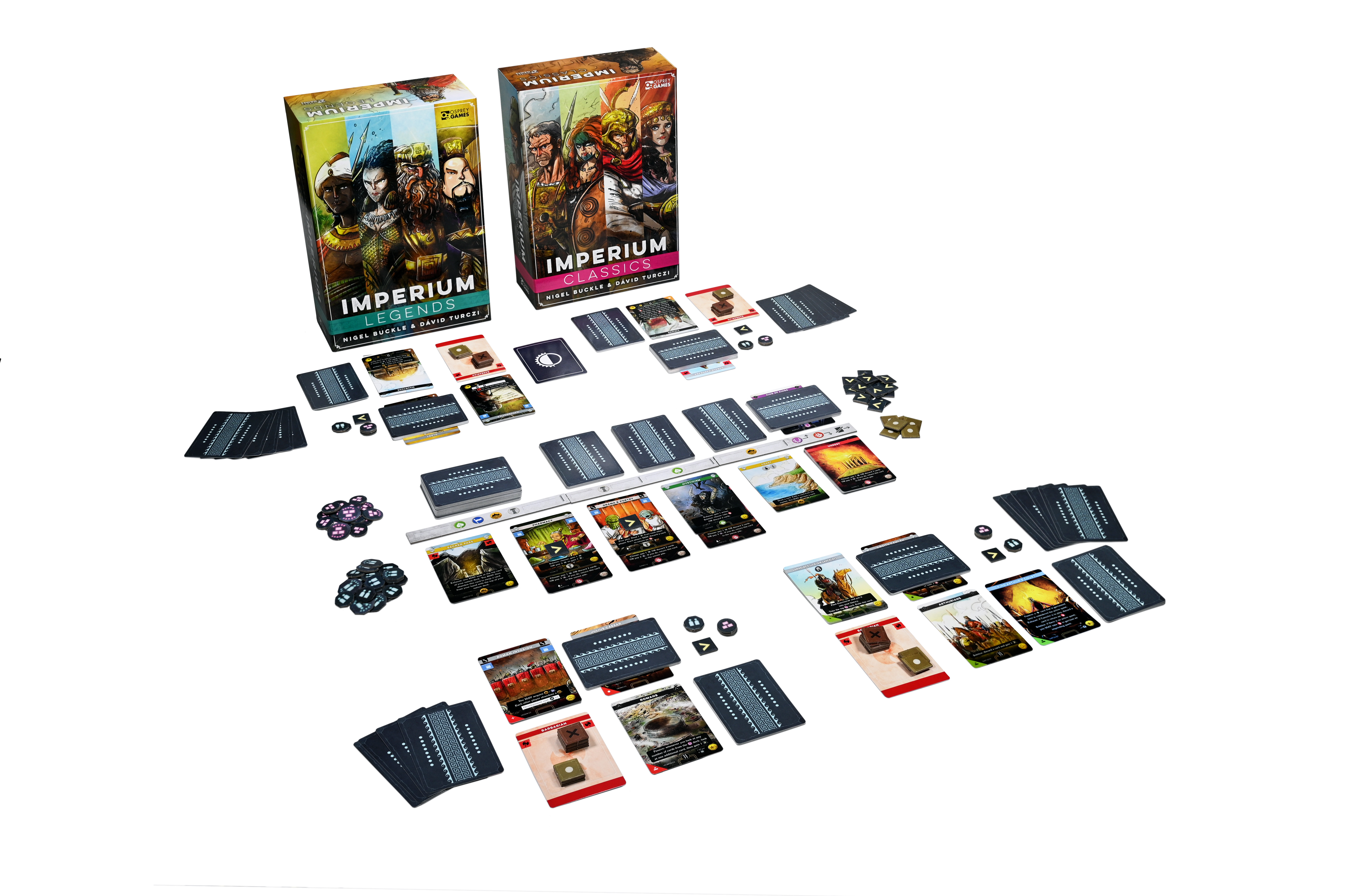
Imperium is a deck builder with a tableau. As you’d expect from a deck builder, you have a starting deck of cards. Some of which allow you to add and remove cards from your starting deck. The differences between each civilisation have been covered in other blog posts, as has the variable market you can gain extra cards from. One thing to draw attention to is that cards you acquire from the market go straight into your hand rather than into your discard pile so you can play them as soon as you gain them, unlike in most popular deck builders. This significantly increases the number of different options you have on your turn.
The tableau element has been briefly touched upon in previous posts but we’ll expand on it here. Many of the cards in Imperium have a pin icon. Pinned cards, once played, remain in front of you in your tableau until the end of the game, unless another game effect removes them.
Some of the cards you play into your tableau, typically regions, do nothing beyond providing icons for other cards. Some have effects that trigger when they are played, and some have the resource icon that earns you resources when you play Prosperity, a card found in many of the civilisations’ decks. Other pin cards have a passive effect that is always active, and some have exhaust effects that you can choose to trigger in your turn. You have a limited number of exhaust tokens, so if you get a multitude of these cards you may not be able to use them all every turn.

Region cards usually have the ability to garrison a card. This means you may take a card from your hand and tuck it under the region card, removing it from your deck for as long as the region remains in play, and therefore enabling you to temporarily thin your deck. Later you can use another card (usually Glory) to remove the region from your tableau and gain access to the garrisoned card again.
The other effect pin cards commonly have is a Solstice effect. Solstice is a shared step at the end of the round after everyone has taken their turn. Some Solstice effects are positive (as a sort of income), some are negative (as a sort of upkeep), and some are optional. The advantage of solstice effects is that you do not need to use an exhaust marker to resolve them. This shared phase also speeds up the game a little bit as everyone can resolve their solstice effects simultaneously.
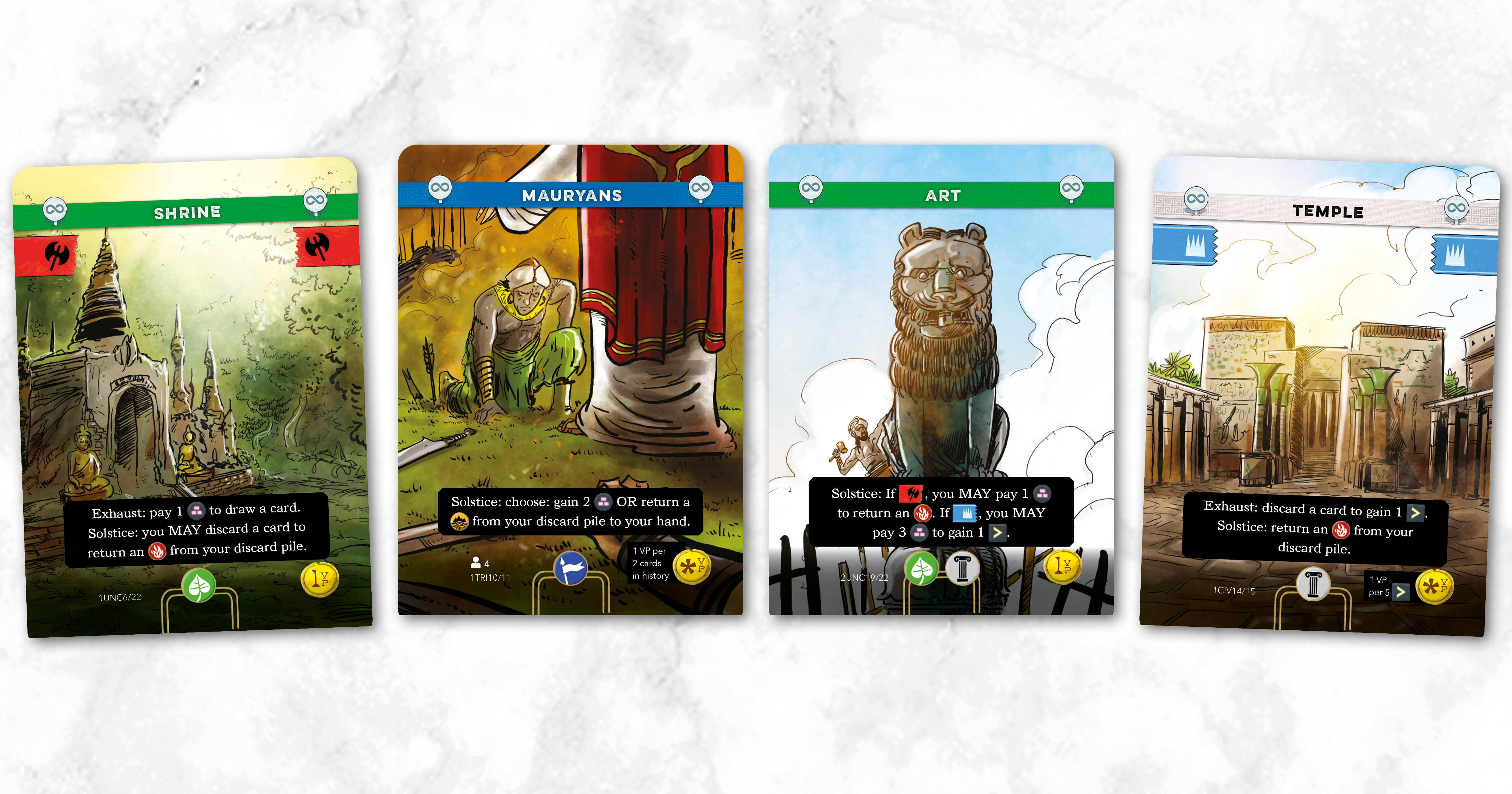
There are two mechanisms for removing cards permanently. The keyword ‘history’ means you tuck the card under your power card. It is gone from your deck until the end of the game, but will count for scoring. Cards can also be exiled, which means they are moved to a separate exile deck. Usually exiled cards are in effect removed from the game, but a few card effects can allow you to gain exiled cards or swap exiled cards with market cards.
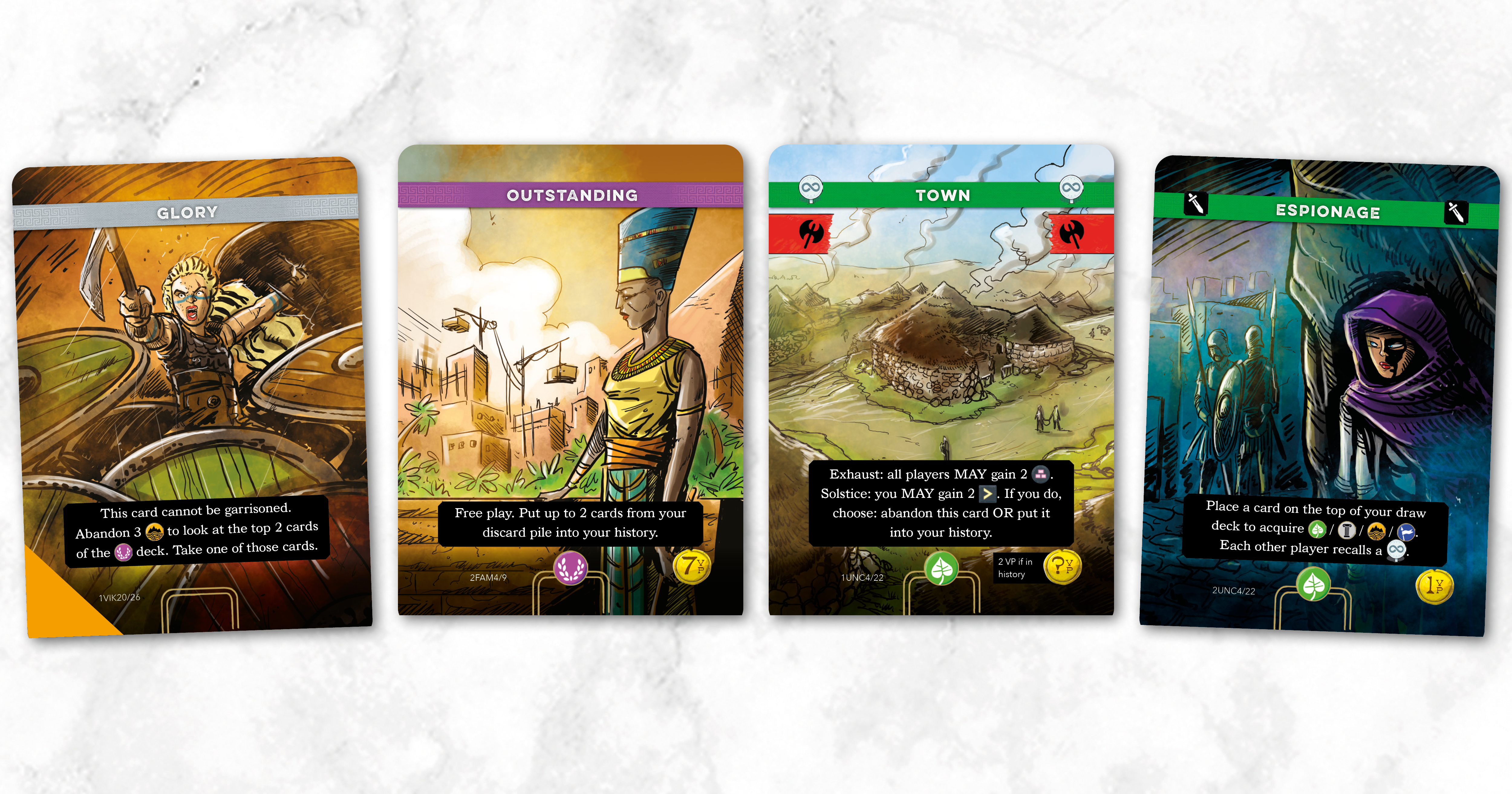
Although Imperium lets you refill back to your hand-size at the end of your turn, hand management is still an important part of the game. You can retain un-played cards from turn to turn, so you need to decide whether to prioritize cycling your deck or holding onto a card for the right time.
There are also cards in Imperium you are not so happy to see. Unrest cards are worth -2 victory points and do nothing but clog up your hand and waste your precious draws. You can return an unrest by playing it and paying its cost of either 3 materials or 2 population, or by discarding 2 other cards from your hand.
In Imperium even selecting the type of turn you want to take is a choice. You can either return any amount of unrest, which is called “Revolt” turn, discard your entire hand to break through for a card from the market, which is called “Innovate” turn, or perform an “Activate” turn where you take actions as normal.
The “Activate” turn is the most common, and gives you the most to think about. There are some card effects that increase the number of actions you can take, and some cards do not count as an action when you play them. You can also use exhaust effects that you pinned to your tableau during an activate turn. These kind of effects can make “Activate” turns very effective.
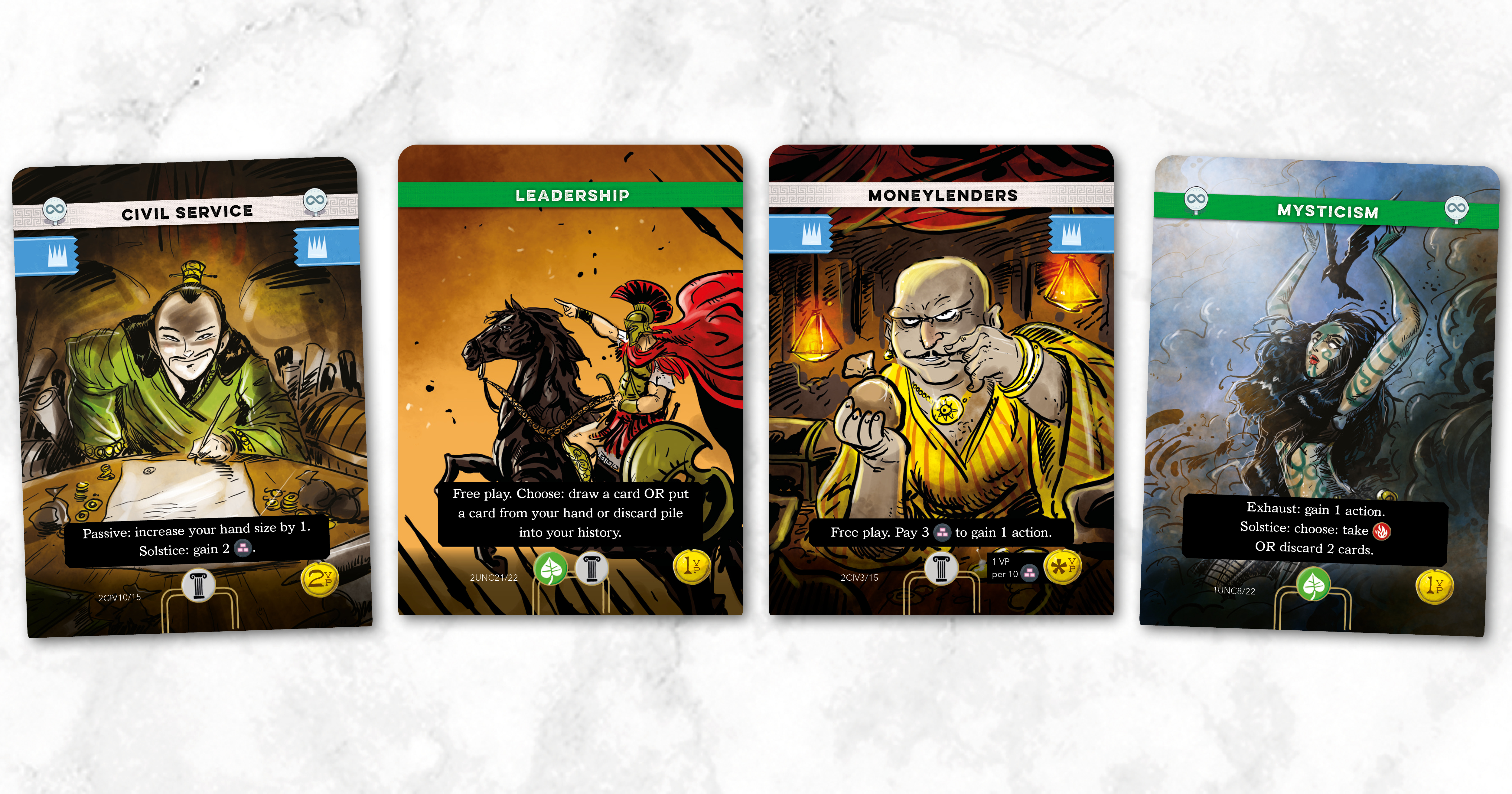
Imperium has 3 different resources: materials, population, and progress, which is an abstraction of cultural might, influence, and inventions. Each progress is worth 1 victory point at the end of the game, or can be spent as two materials or one population. At the end of your turn you add 1 progress from the supply to a card in the market. When a card is gained from the market you also gain any progress accumulated on it. This is one of the most prominent, subtle interactions of the game.
You can gain cards from the market either by acquiring them or by using a breakthrough effect. When you acquire a card you add it to your hand, along with the unrest associated with it. A breakthrough allows you to gain a market card without the unrest, or alternatively declare the type of card you want and gain the first card of that type from the top of the market deck.
In Imperium your civilisation generally starts as a barbarian state, which means you can play cards with the barbarian axe icon. Each time you cycle your deck, you will add one of your nation cards to your discard pile before you reshuffle. Eventually you will add your special accession card, and at that point your state changes from barbarian to empire. As an empire you can no longer play the cards with the barbarian icon, representing obsolescence and old habits falling to the wayside, but you can instead play cards with the empire crown icon.
Some cards are attacks and these are detrimental to all your opponents. These effects can include stealing resources, recalling or abandoning cards from their tableaus, discarding cards from hand, or giving them unrest. There are cards that protect players against attacks.
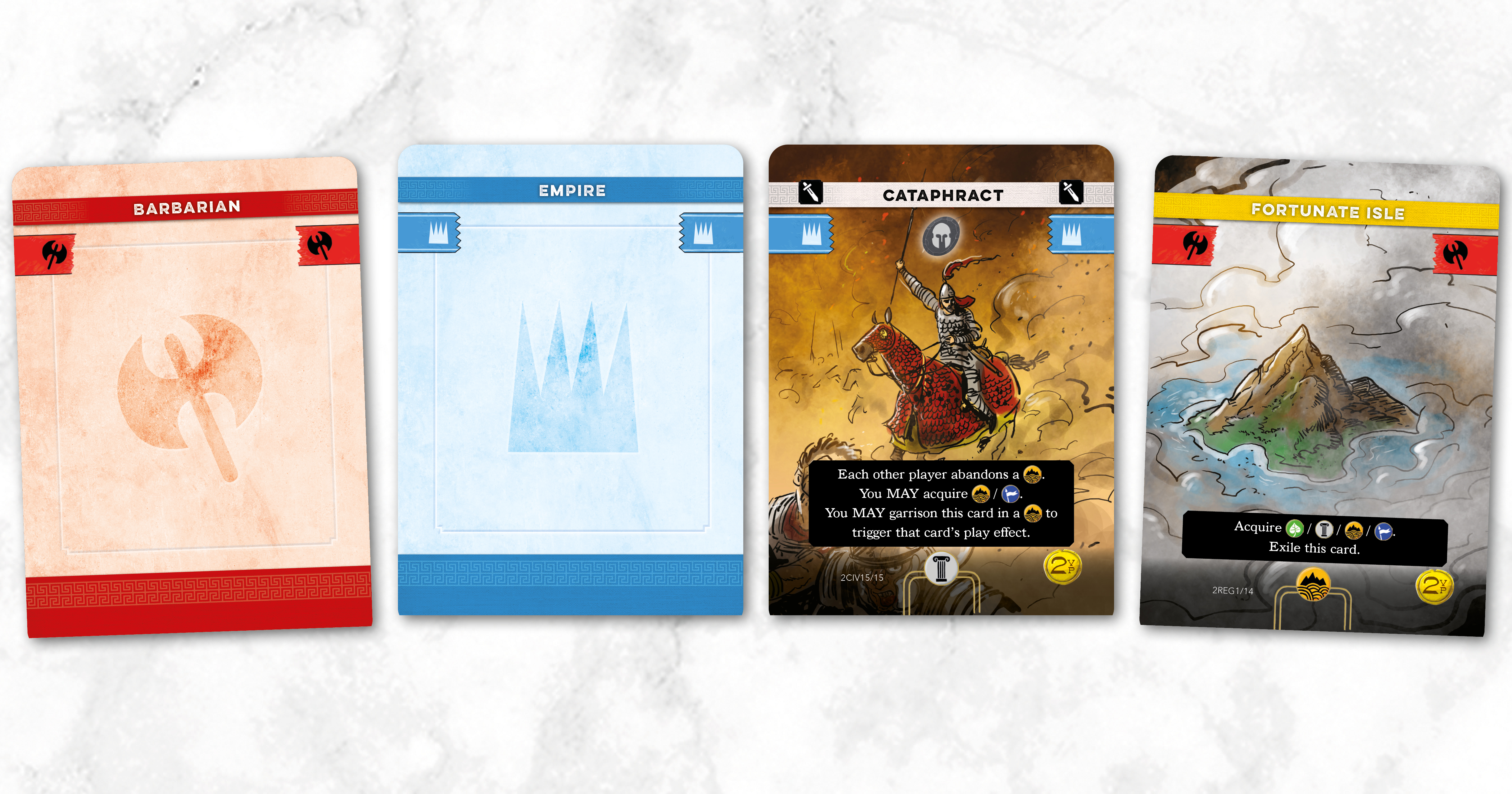
Once you become an empire, when you cycle your deck, instead of gaining a nation card, you can develop. This means selecting one of your set aside development cards, paying the costs shown, and then adding it to your discard before you reshuffle. Some civilisations also have a card that allows you to develop independently of cycling your deck.
The game ends when scoring or collapse is triggered. Scoring is triggered when a player has added all their developments, the main deck for the market runs out of cards, or King of Kings is triggered. Then, one further round is played, and after that all players add up their victory points and the player with the most is the winner.
King of Kings is the last card in the Fame deck. Once all the other Fame cards are taken, instead of taking the King of King cards you gain its benefits and flip it over to show that the end of the game has been triggered.
Collapse is triggered when the last unrest card is taken from the unrest deck. If this happens the game ends immediately. All players count the number of unrest cards they have and the player with the fewest wins.
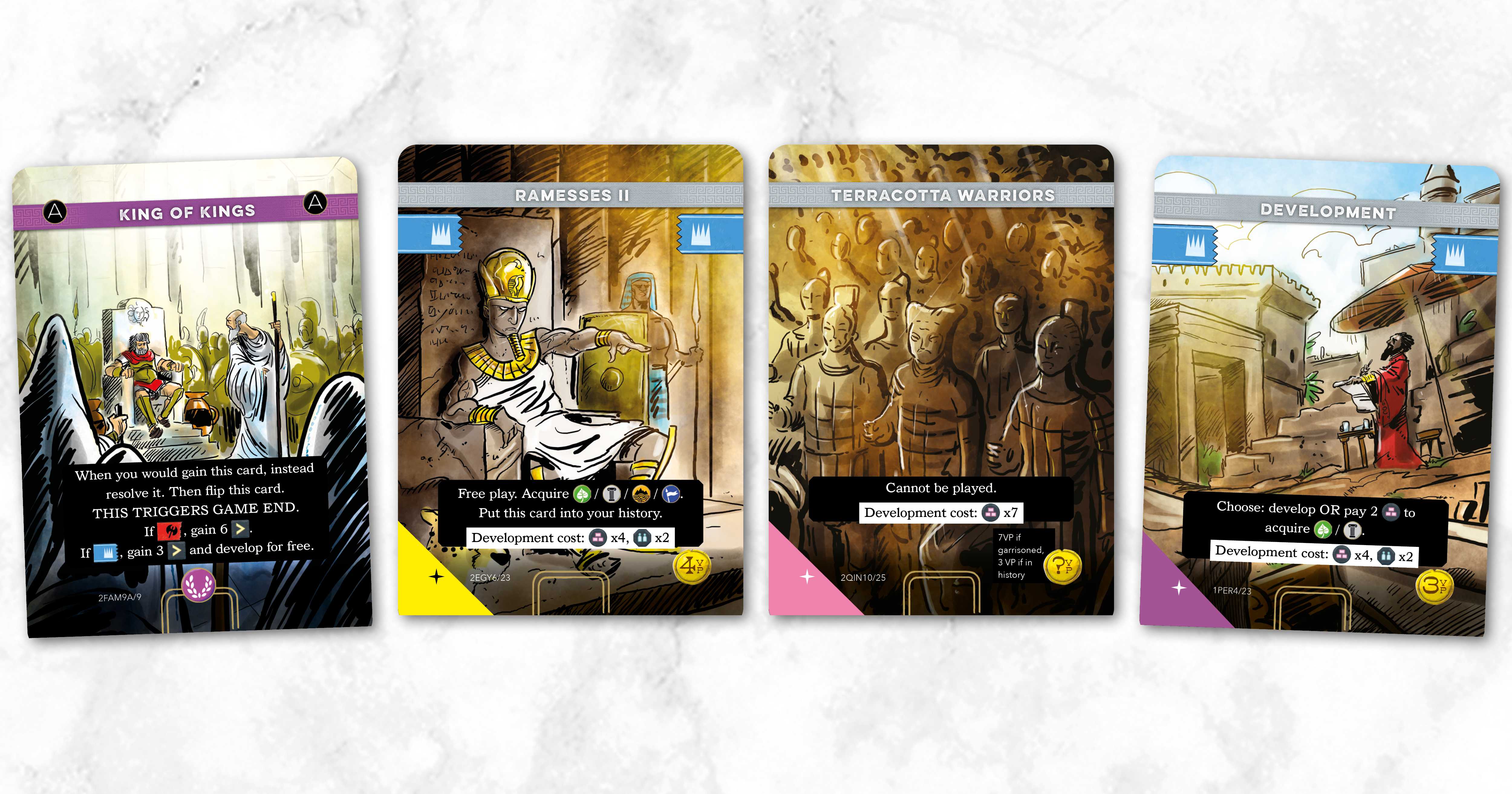
The mechanisms in Imperium are communicated by keywords on the cards. The majority of the rule book is a large glossary of every keyword in the game. Some keywords such as acquire and break through are very common and you will likely learn their effects quickly. Some keywords are far less common and a few are unique to particular civilisations.
-----------
That's all from us here on the Imperium blog. Thanks to everyone who's been avidly reading these over the past few months and a huge thank you to Nigel Buckle and David Turczi for writing them. If you've enjoyed reading about these games as much as we've enjoyed writing about them, then please make sure you head over to our store where you can find Imperium: Classics and Imperium: Legends out now.
History beckons.

Comments
You must be logged in to comment on this post. Click here to log in.
Submit your comment